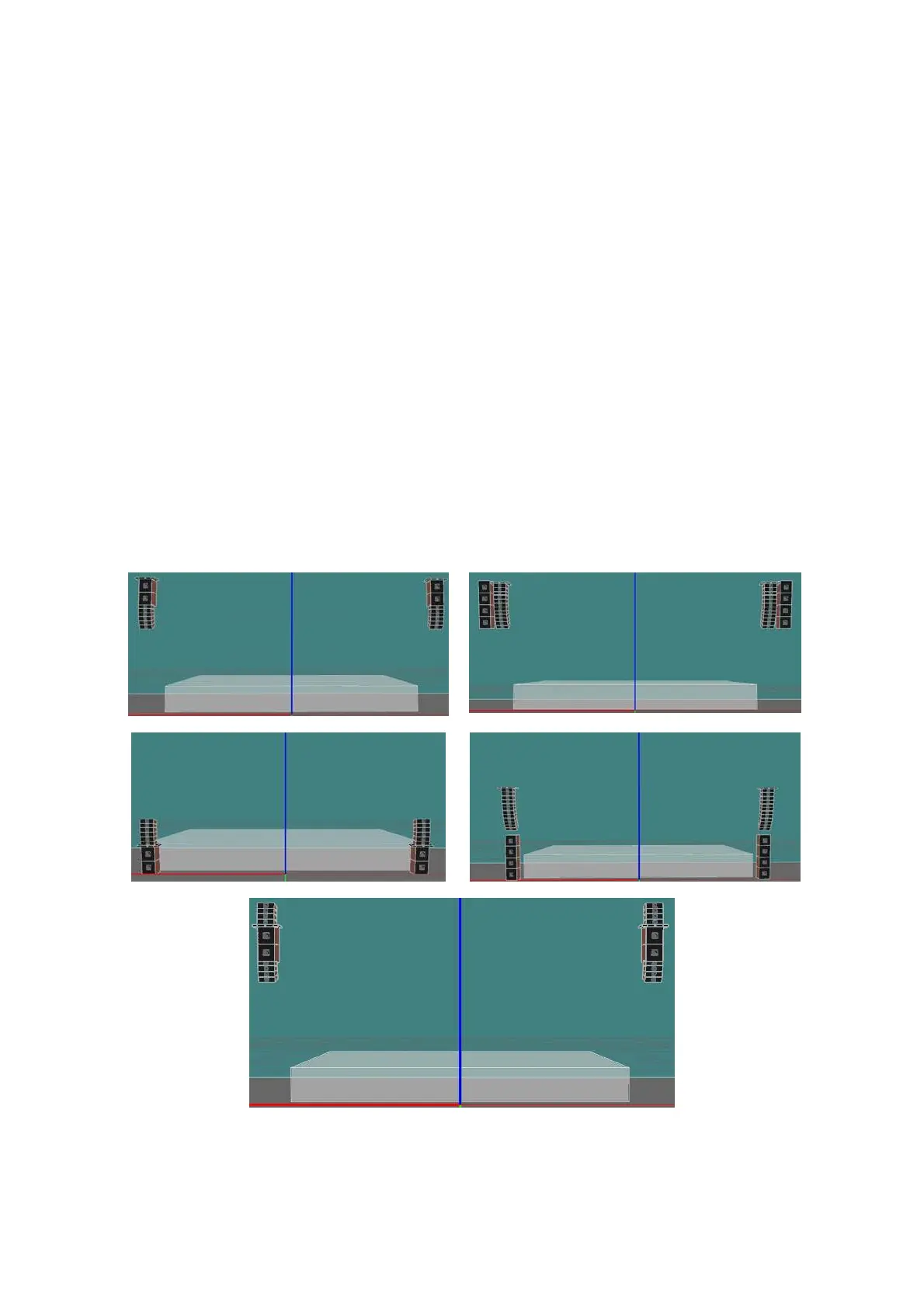dV-DOSC dV-SUB Manual V3.0 June 2005 86
3.4.2 Physically Coupled dV-SUB/dV-DOSC (3-way system operation)
dV-SUBs can be physically coupled with the dV-DOSC array by rigging dV-DOSC underneath,
stacking dV-DOSC on top of dV-SUB, flying a separate dV-SUB array offstage with minimum physical
separation, or stacking dV-SUB below a flown dV-DOSC array with minimum separation. For these
configurations, the system is normally operated in 3-way mode and three preset options are available
(80, 120 or 200 Hz crossover points between dV-SUB and the dV-DOSC low section).
The 80 Hz crossover point is intended for applications where dV-SUB and dV-DOSC are physically
separated (eg. ground stacked subwoofers with flown dV-DOSC) but this preset will also work for
closely coupled configurations. In some cases (e.g., theatrical sound reinforcement), it can be desirable
to use the 80 Hz crossover point to benefit from the horizontal pattern control of the dV-DOSC low
section, i.e., the dV-SUB is more omnidirectional than dV-DOSC at lower frequencies and if used up
to 120 Hz or 200 Hz, reduced gain before feedback may result.
The 120 Hz crossover point is optimal in terms of power bandwidth for both dV-SUB and the dV-
DOSC low section and is intended for all closely coupled flown or stacked configurations.
Note: For the same reason, 3W presets are recommended for all closely coupled dV-DOSC and SB118 or
SB218 configurations (i.e., due to the 120 Hz crossover point between SB218 or SB118 subwoofers and the
dV-DOSC low section).
The 200 Hz crossover point allows dV-SUB to function as a combination sub/low enclosure (for
improved bass guitar definition) and also provides an operating bandwidth that corresponds to that of
the V-DOSC low section. The 200 Hz crossover point is for closely coupled configurations except for
coplanar flown configurations, i.e., when dV-SUB arrays are flown on both sides of a dV-DOSC array.
(a) dV-DOSC flown below dV-SUB
(b) dV-SUB flown offstage with minimum separation
(c) dV-DOSC stacked on dV-SUB
(d) dV-SUB stacked below with minimum separation
(e) dV-DOSC stacked on top/flown below dV-SUB using dV-BUMP2
Figure 65: Physically coupled subwoofer configurations

